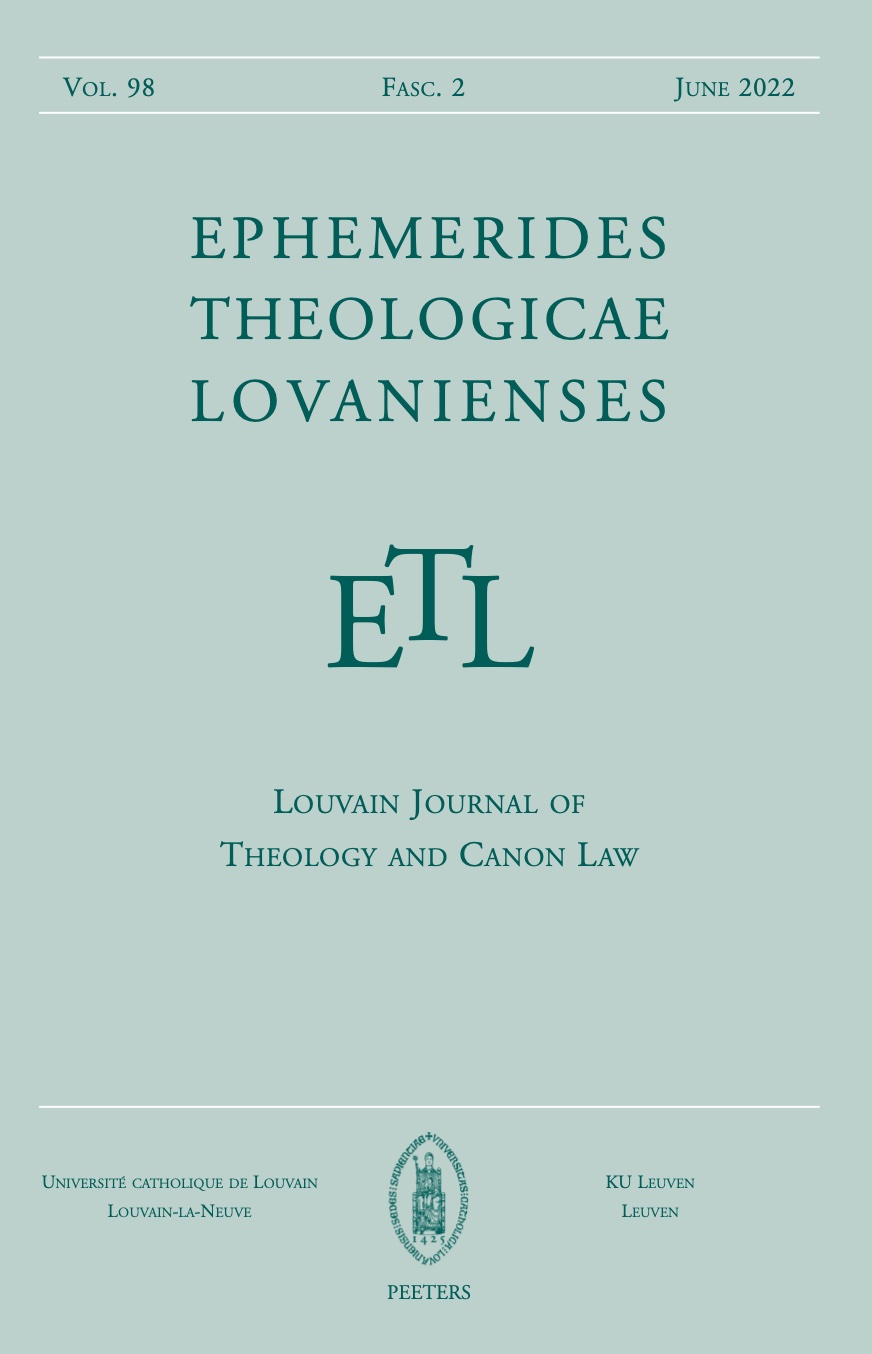 previous article in this issue previous article in this issue | next article in this issue  |

Preview first page |
Document Details : Title: The Septuagint of Ezekiel according to Papyrus 967 and the Pentateuch Author(s): LUST, J. Journal: Ephemerides Theologicae Lovanienses Volume: 72 Issue: 1 Date: April 1996 Pages: 131-137 DOI: 10.2143/ETL.72.1.504858 Abstract : Papyrus 967 contains Ez 11,25–48,34; Dan 1–12,3; Dan 14 (Bel and the Dragon); Dan 13 (Susannah); Esther. According to Kenyon it is to be dated to the first half of the 3d century B.C., according to others it was composed in the 2nd century. Its Ezekiel text stands very close to that of the prehexaplaric Ms B. For a more detailed description of the manuscript we may refer to the introductions of the editions, especially to that of Johnson. Although its vocabulary is very similar to that of Ms B and of the critical editions of the Septuagint of Ezekiel, its deviations may have an impact on the assessment of the relation between the vocabulary of the Greek version of Ezekiel and that of the translation of the Pentateuch and of the other books of the Bible. In several more or less recent contributions on the vocabulary of the Septuagint, this remains unnoticed. To some extent this is due to the fact that the studies in question are based on the concordance of Hatch and Redpath and the critical editions of Rahlfs, published a long time before the discovery of the papyrus, or on the critical edition of Ziegler which could not yet take into account the largest part of the papyrus. In the first part of the following remarks we take some of these studies as our starting point. The authors referred to are: E. Tov, S. Daniel, and R. Sollamo. In a shorter second part we list a series of other observations on the vocabulary of Ezekiel according to the papyrus, and the Pentateuch. |
|


